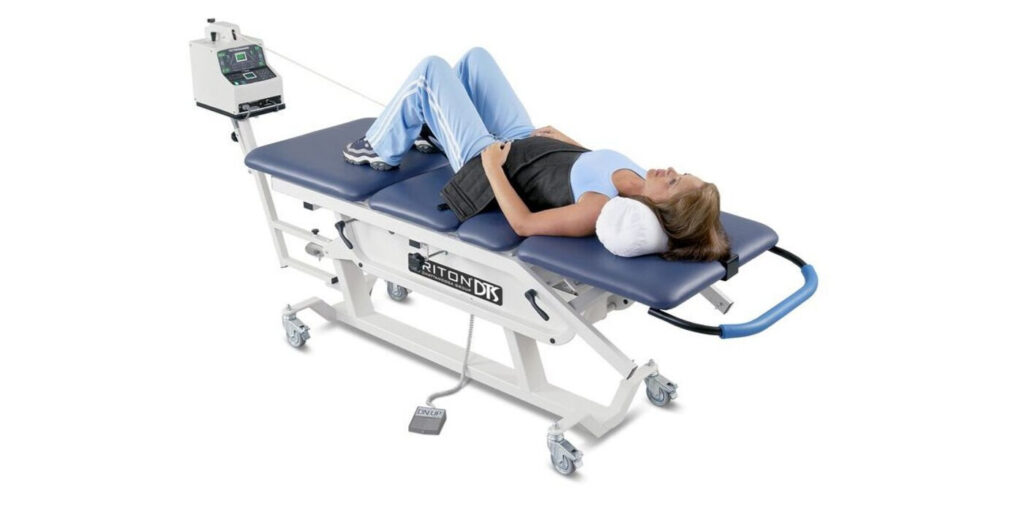Low power traction therapy
“Managing pain, restoring comfort – one step at a time.”

Low-power traction therapy is a type of therapy that involves the use of mechanical force to stretch and mobilize the spine or other joints in the body. This therapy is typically used to treat conditions such as herniated discs, sciatica, and spinal stenosis.
During a low-power traction therapy session, the patient lies on a special table that has straps and pulleys attached to it. The straps are attached to the patient’s body in specific areas, and then a small amount of force is applied to the straps, which creates a gentle stretch on the spine or joint.
The force used in low-power traction therapy is typically much lower than in traditional traction therapy, making it a safer and more comfortable option for patients. Additionally, low-power traction therapy can be performed in a clinical setting or at home with the use of a portable traction device.
While low-power traction therapy can be effective for some patients, it is not suitable for everyone. Patients with certain medical conditions, such as osteoporosis, should avoid traction therapy. It is important to discuss any concerns or medical conditions with a healthcare professional before beginning any type of traction therapy.
The goal of low-power traction therapy is to relieve pressure on the affected area of the spine, which can help reduce pain, inflammation, and other symptoms. During the treatment, the patient lies on a table or chair, and a traction device is attached to the affected area. The device then applies a gentle pulling force, which stretches the spine and helps relieve pressure.
Low-power traction therapy is a non-invasive and safe treatment option for many people with spine-related conditions. However, it may not be appropriate for everyone, and it is important to consult with a healthcare provider before starting this therapy. Additionally, the effectiveness of this therapy can vary depending on the individual case and the severity of the condition being treated.
The goal of low-power traction therapy is to reduce pain, increase mobility, and promote healing in the affected area. The therapy works by gently stretching the spine or joint, which creates a negative pressure within the disc or joint space. This negative pressure can help to relieve pressure on nerves and reduce pain.
Low-power traction therapy can be performed using a variety of devices, including traction tables, inversion tables, and specialized equipment designed for specific joints such as the shoulder or hip. The therapy can be performed by a chiropractor, physical therapist, or other healthcare professional.
While low-power traction therapy is generally considered safe, it may not be appropriate for everyone. Individuals with certain medical conditions, such as spinal cord compression, spinal fractures, or osteoporosis, may not be good candidates for this therapy.
If you are considering low-power traction therapy, it is important to discuss your medical history and current symptoms with a qualified healthcare professional to determine if this therapy is appropriate for you.
Low-power traction therapy is a type of physical therapy that uses a machine to gently stretch and mobilize the spine. It is typically used to treat conditions such as herniated discs, sciatica, and other conditions that cause back pain.
The amount of pulling force applied during a low-power traction therapy session is much less than that used in traditional traction therapy, which can be uncomfortable or even painful for some patients. Instead, low-power traction therapy uses a more gentle approach that is less likely to cause discomfort or muscle spasms.
Overall, low-power traction therapy is a safe and effective treatment option for many types of back pain. However, it may not be suitable for everyone, and it is important to talk to your healthcare provider before starting any new treatment program.
